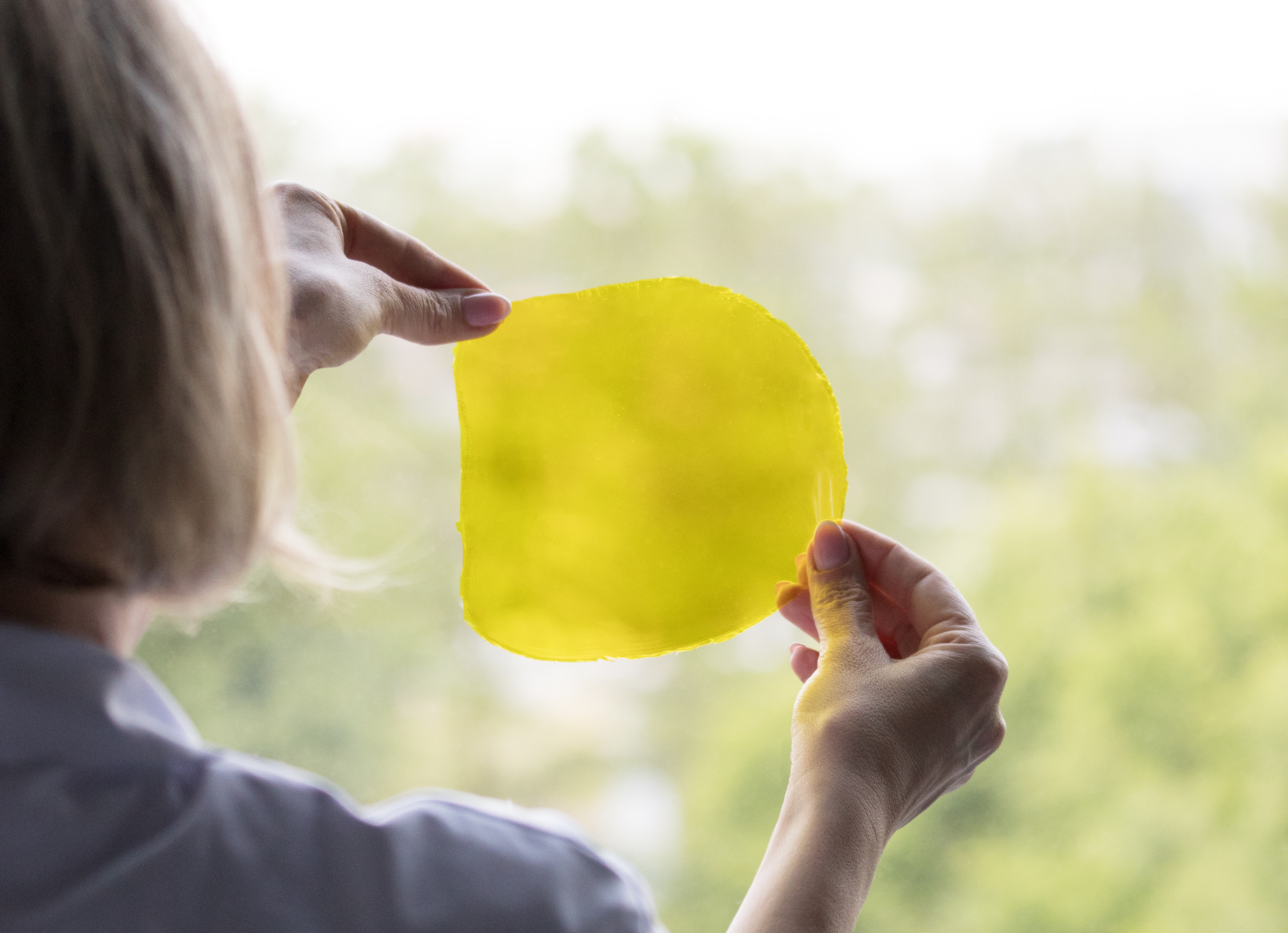Environmentally friendly proton-conducting membrane for electrolysis and fuel cells
As part of the Fraunhofer lighthouse project »Electricity as a Raw Material«, ten Fraunhofer Institutes joined forces to develop new electrochemical processes for the synthesis of important base chemicals and to optimize existing processes. The lighthouse project started in August 2015 and runs until July 2018. At the Fraunhofer Institute for Applied Polymer Research IAP, the scientists developed a novel proton-conducting polymer membrane as part of the project.
Fraunhofer IAP at ACHEMA 2018: hall 9.2 | booth D66
In order to use the technology of the electrolysis sustainably in the chemical industry or for the storage of renewable energies, technological advances are necessary. Using electrochemical processes for the production of base chemicals can reduce costs in the long term and link the energy system to chemical production.
Usually, electrolyses use membranes to separate cathodes and anode space. These prevent the mixing of the two electrolytes. Such a membrane is either a microporous separator that allows all ions to pass through, or a selective anion or cation exchange membrane.
Inexpensive and environmentally friendly
Thus, ion-conducting polymer membranes are an important component in the application fields of electrolysis and fuel cells. The aim of the researchers at the Fraunhofer IAP was to develop these membranes beyond the state of the art in order to use them, for example, for the decentralized, electrochemical production process of hydrogen peroxide.
The scientists developed a completely new development concept for the production of inexpensive and environmentally friendly ion-conducting membranes for the use in electrolysis and fuel cells.
It was an important goal within the development to increase the service life of the membranes, while at the same time maintaining performance and reducing costs. Previously used perfluorinated polymers, such as Nafion®, have disadvantages:
membranes based on these polymers are associated with high costs, lose their proton conductivity over time and frequently there are problems regarding oxidation stability. Also, the release of fluorine into the environment is probable. In high concentrations, fluorine is harmful to most living things, so preventing the release of fluorine is an important environmental factor.
Poly(phenlyquinoxaline) belong to the family of aromatic condensation polymers, which are characterized by a particular thermal and chemical stability. Based on this polymer class, new blockcopolypyphenylquinoxalines (BPPQs) were fabricated by polycondensation reactions. Subsequently, the polymers were sulfonated. The Fraunhofer researchers developed reproducible sulfonation conditions.
The fabricated sulfonated BPPQs have excellent solubility in organic solvents, for example, dimethylacetamide. These also show excellent thermal stability. Both properties are central to membrane fabrication.
Proton conductivities comparable to state of the art
In addition to material development, the researchers’ focus was on optimizing and simplifying the membrane manufacturing process. The membranes can be produced on a laboratory scale and are mechanically very stable. In addition, they show a high oxidation stability.
Based on this material development and the membranes produced therefrom, it was possible to achieve comparable proton conductivities in the range of 1 mS/cm compatible with the state of the art. The fluorine concentration in the new polymers can be drastically reduced compared to the current benchmark Nafion® (Nafion® contains more than 70 percent fluorine, BPPQ about 5 percent fluorine).
Thus, a more environmentally friendly disposal of spent membranes is much easier possible. This will further reduce the cost of future processes using these novel membranes.
Last modified:
